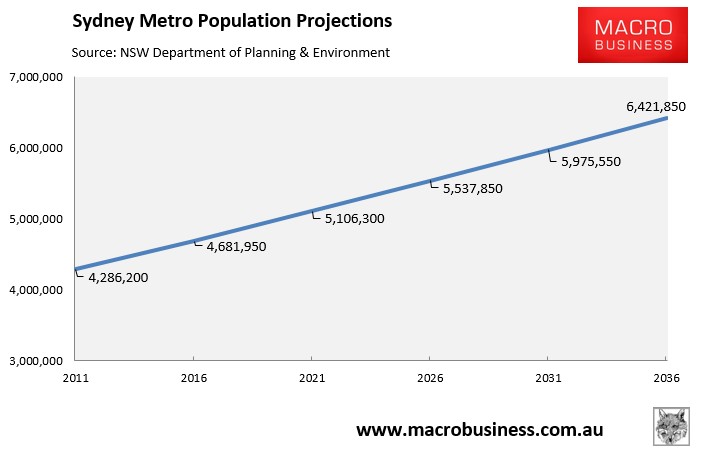The New Daily’s Rob Burgess penned an article yesterday which took a direct ‘racism’ swipe at yours truly over my long-running campaign to lower Australia’s immigration intake:
One of the issues certain to feature in the next federal election is Australia’s rampant population growth, more than half of which is due to immigration.
It’s a vexed debate because it is usually conducted just a hair’s breadth away from xenophobia or blatant racism – making it a well of support for politicians who wish to ‘dog whistle‘ on those issues…
Economist Leith van Onselen, for instance, has railed for years against the high levels of immigration that became the norm during the years of the Howard government.
In particular, he focuses on the way the flood of new Australians:
- pushes up house prices by ensuring demand continues to outstrip supply;
- puts strain on creaking infrastructure, particularly road and rail; and
- inflates headline GDP numbers, while per capita GDP growth remains weak.
They are good arguments, especially for the bulging capitals of Sydney and Melbourne where house prices are ridiculous, trains are packed tight and major roads are grid-locked twice a day if not more.
There is, however, a political danger that comes with these arguments – beyond the obvious whipping up of xenophobia…
If we got the balance wrong in the past 15 years on housing/population, infrastructure/population and growth/population, cutting immigration would seem to be the obvious answer.
But attacking the population side of the equation is a bit like the old joke about religious puritans – that they ‘don’t like sex, because it can lead to dancing’.
When it comes to immigration, we ‘don’t like people, because they can lead to policy failure’.
…it’s not hard to see that Australia isn’t full of people – only full of politicians who have stoked a property bubble without boosting supply, failed to invest in adequate infrastructure, and have tricked the nation into believing that jobs will flow from a historic run-up in private debt…
In short, the government has to take its share of the blame for creating an under-populated nation that ‘can’t afford’ to house new migrants, or provide them with services and jobs.
So in the short-term immigration levels will need to be cut. But in the longer-term we need to stop blaming willing, hard-working, would-be migrants for the policy failings of Canberra.
We are – or at least should be – much bigger than that.
What I take particular issue with is Burgess’ assertion that I (and others arguing along similar lines to slash immigration) am “blaming willing, hard-working, would-be migrants for the policy failings of Canberra” and that I should think much “bigger than that”. This infers xenophobia and racism on my part, rather than the truthful acknowledgement that immigration levels have risen way too high to be realistically absorbed due to a a deliberate policy decision (failure) by Canberra that more than doubled the migrant intake from the early-2000s.
That said, I do have some sympathy for Burgess’ views. If Australia wasn’t so centralised, mass immigration could work. If the government invested massively in infrastructure and liberalised land supply, we could probably support high levels of immigration without creating huge indigestion. But reality always trumps the theoretical.
The data speaks for itself.
The permanent migrant intake underpinning Australia’s net overseas migration was more than doubled in the early-2000s, from 80,000 in 1999 to around 200,000 currently:
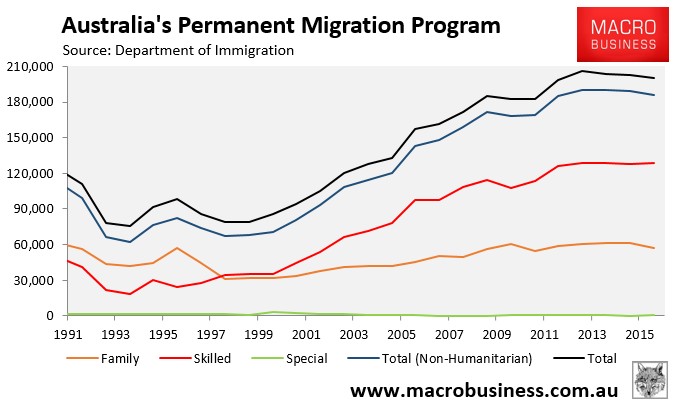
As noted in the Productivity Commission’s (PC) recent Migrant Intake into Australia, migrants are all but certain to settle primarily in Sydney and Melbourne, which are already crush-loaded. 86% of immigrants lived in the major cities of Australia in 2011, whereas only 65% of the Australian-born population did:
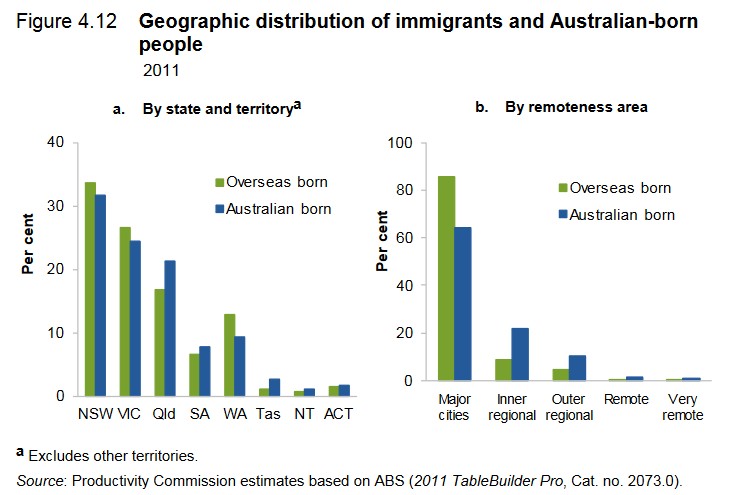
According to the PC: “of the immigrants living in capital cities in 2011, most lived in either Sydney or Melbourne, with 1.5 million residents of Sydney and 1.3 million residents of Melbourne born overseas”.
While Burgess may hope that Australia can magically decentralise and shift growth to the regions, or can magically build enough infrastructure to cope with the population influx, realistically this is never going to happen under existing settlement patterns.
Official population projections have Sydney’s population growing by 87,000 people per year (1,650 people each week) to 6.4 million over the next 20-years – effectively adding another Perth to the city’s population:
Melbourne’s population is projected by the State Government to balloon by 97,000 people per year (1,870 people each week) over the next 35 years to more than 8 million people – effectively adding 2.5 Adelaide’s to the city’s population over this time period:
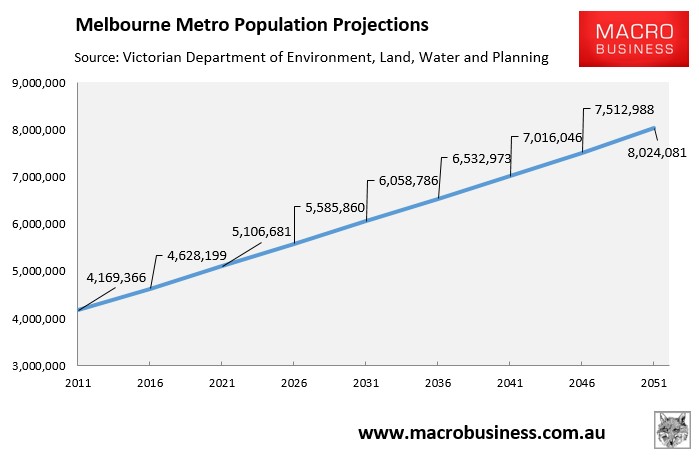
It is frankly a pipe dream to believe that infrastructure can keep up with populations that are growing by 80,000 to 100,000 people every year, driven by mass immigration.
In fact, the PC’s final report on An Ageing Australia: Preparing for the Future warned that total private and public investment requirements over the next 50 years are estimated to be more than 5 times the cumulative investment made over the last half century (see below table). How is such massive infrastructure investment realistically achievable? And who is going to pay for it?
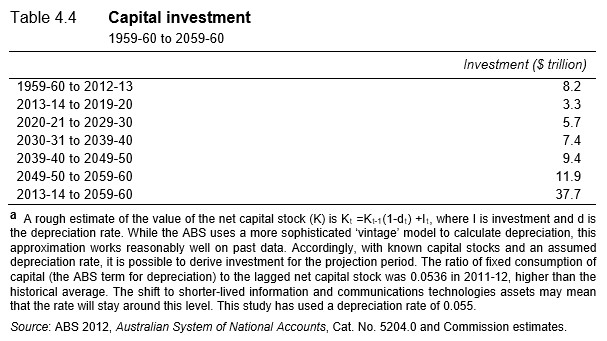
Given the impossibility of successfully digesting the torrent of people projected to flood Sydney and Melbourne, the most obvious solution is to permanently dial Australia’s immigration intake back to the sensible and sustainable levels that existed pre-2000s (see first chart above).
This issue has nothing to do with “xenophobia”, “dog whistling” or scapegoating “willing, hard-working, would-be migrants”. It’s purely a numbers game.
Don’t play the racism card, Rob. You “are – or at least should be – much bigger than that”.

